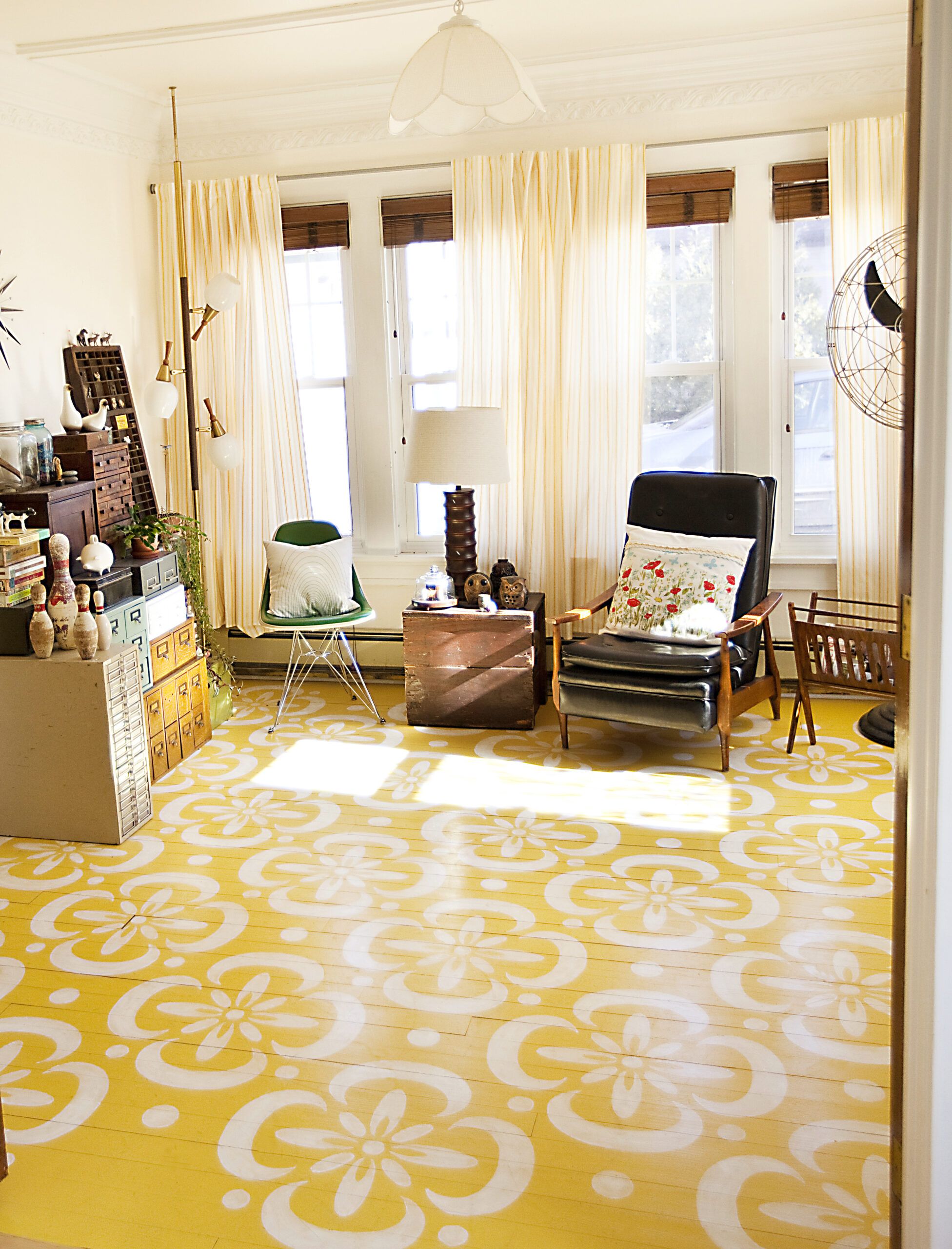Whether you’re dealing with worn-out wood, dull concrete, or lackluster stair treads, fresh paint can transform your space without breaking the bank. This article explores 11 creative ways to update your floors with paint, providing inspiration and practical tips to help you tackle your next project.
Checkerboard Pattern on Wood
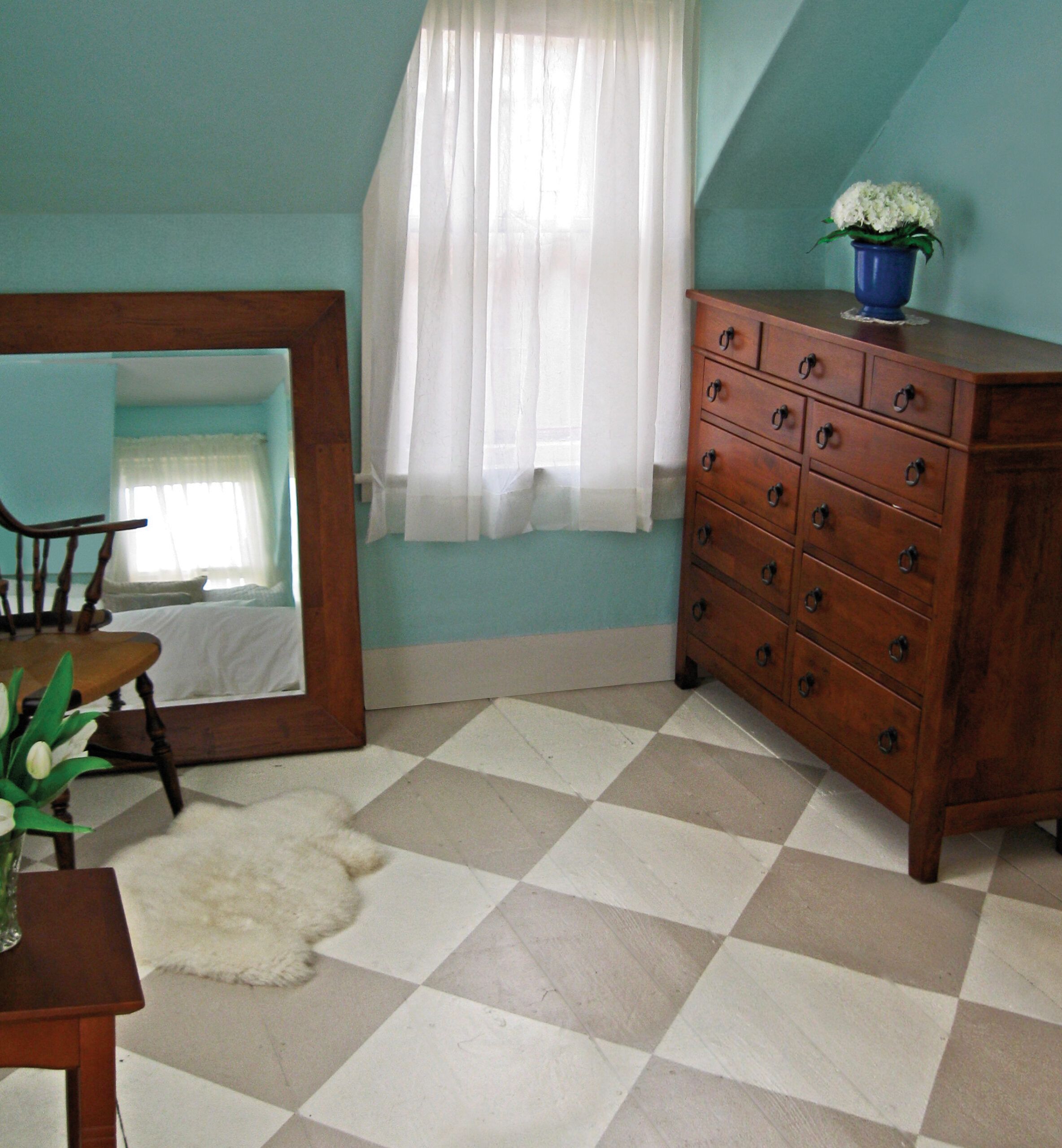
A classic checkerboard pattern is a great choice for giving worn-out wood floors a charming cottage feel. This timeless design is relatively simple to create and can dramatically transform a room. To get this look, you’ll need to measure your floor carefully and use painter’s tape to section off the squares. Choose contrasting colors that complement your decor, and apply multiple coats of durable floor paint for a lasting finish.
Experiment with various color combinations to match your interior design. You can also scale the squares according to your room dimensions to achieve visual balance. This Old House senior technical editor Mark Powers has even more tips in our How To Paint a Floor guide.
Compass Rose and Stripes on Wood
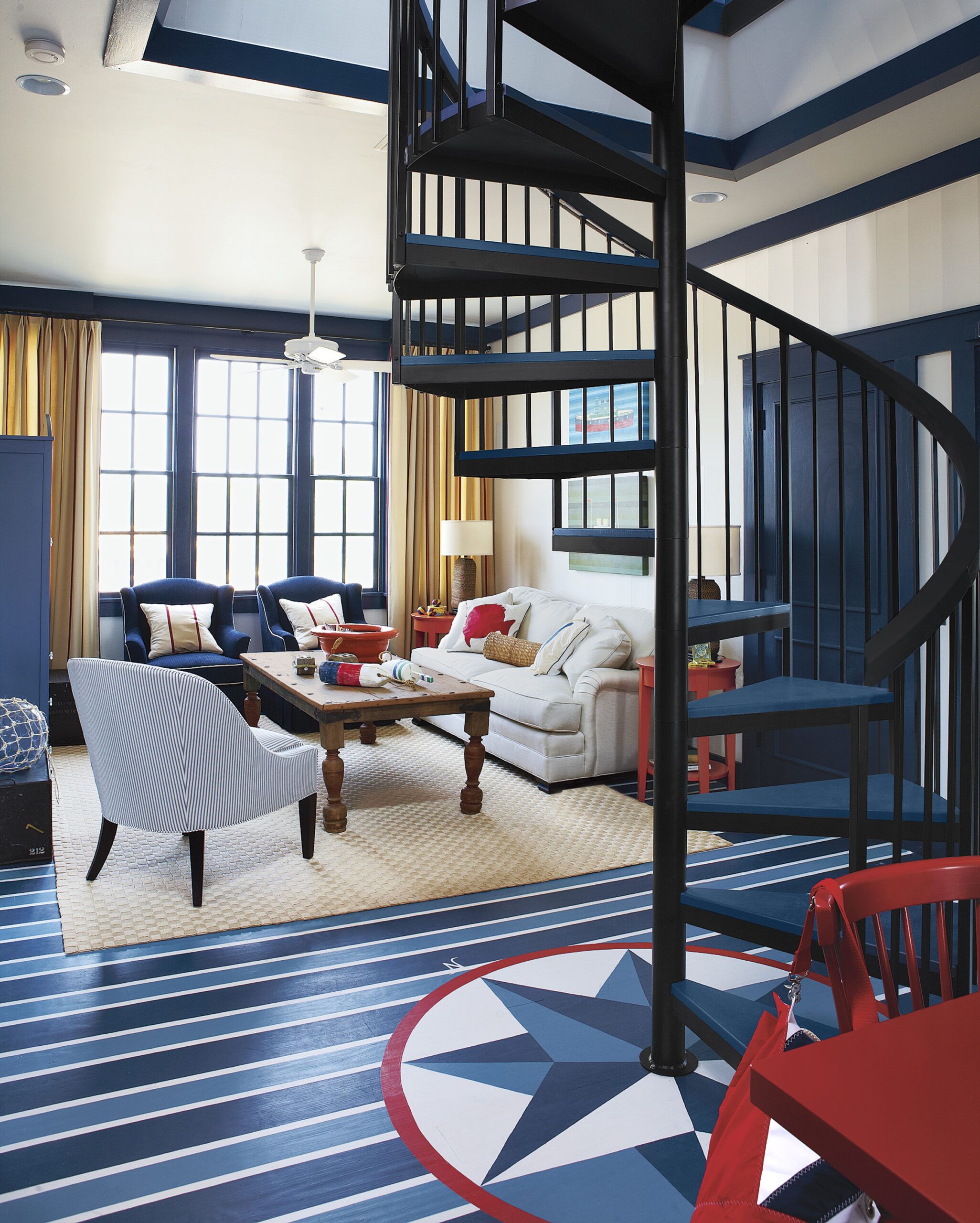
For a nautical-inspired look, paint a compass rose and stripe design on your wood floor. This eye-catching pattern adds energy and vibrance to a room, especially when done in shades of white, navy, and ocean blue. It creates a sense of movement and direction, perfect for entryways or living spaces.
Use a compass rose template and carefully measure and tape off the stripes. Start by painting the background color, then add the compass rose and stripes in contrasting shades. Accentuate the design by using metallic paints or incorporating subtle shading to give a three-dimensional effect.
Broad Bands on Brick
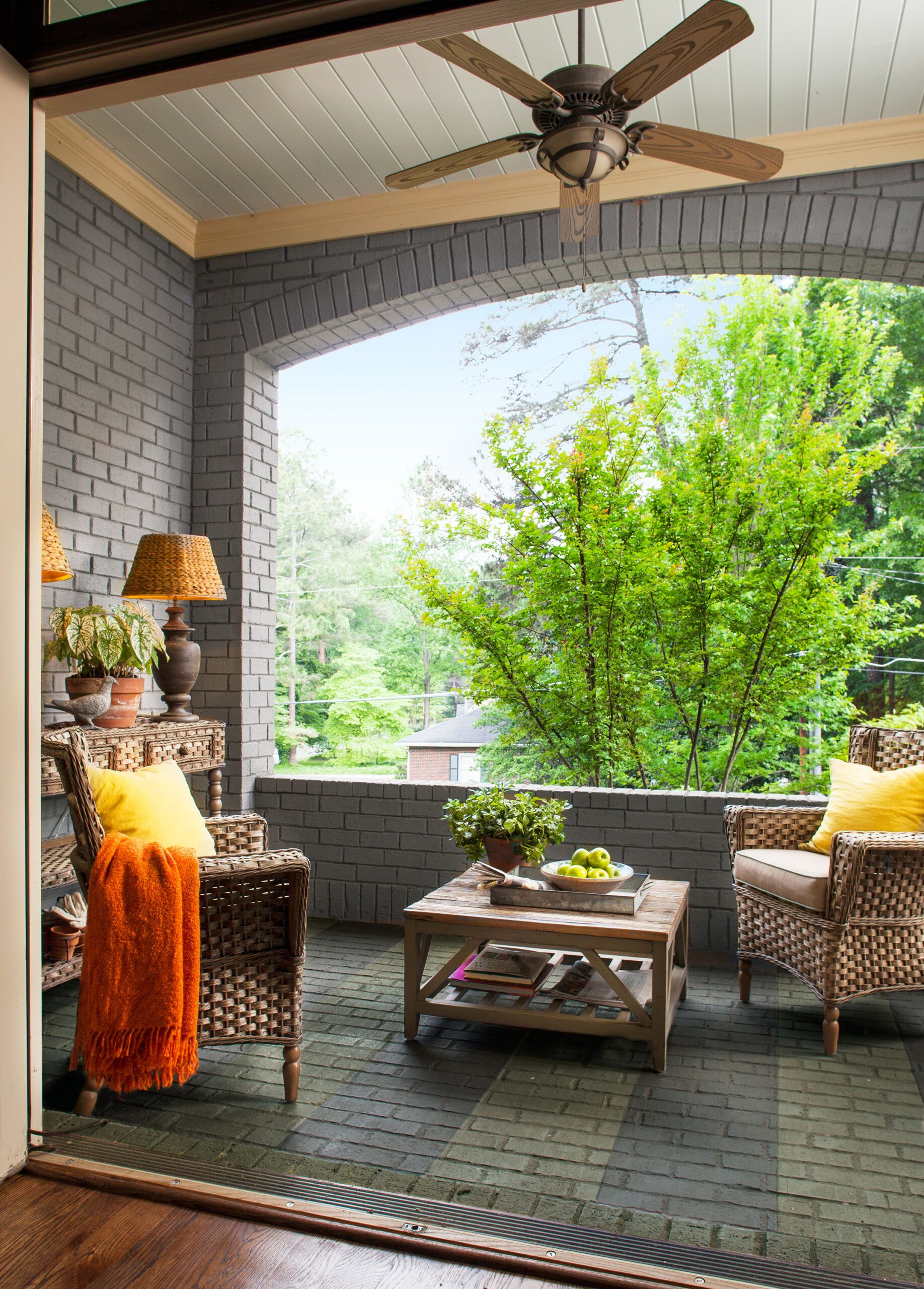
Brick patios and porches can also benefit from a paint makeover. Large stripes add definition and create the illusion of more space. Apply a gray-tinted exterior stain as a base coat to soften the all-brick look and unify the floor and walls. Then, add wide bands of stain in a contrasting color for visual interest. You can vary the bands’ width and orientation to create different visual effects, like elongating a space or adding height.
When painting brick, use products specifically designed for exterior use and porous materials. This will help the paint adhere properly and withstand foot traffic and weather.
Hardwood Floor Medallion
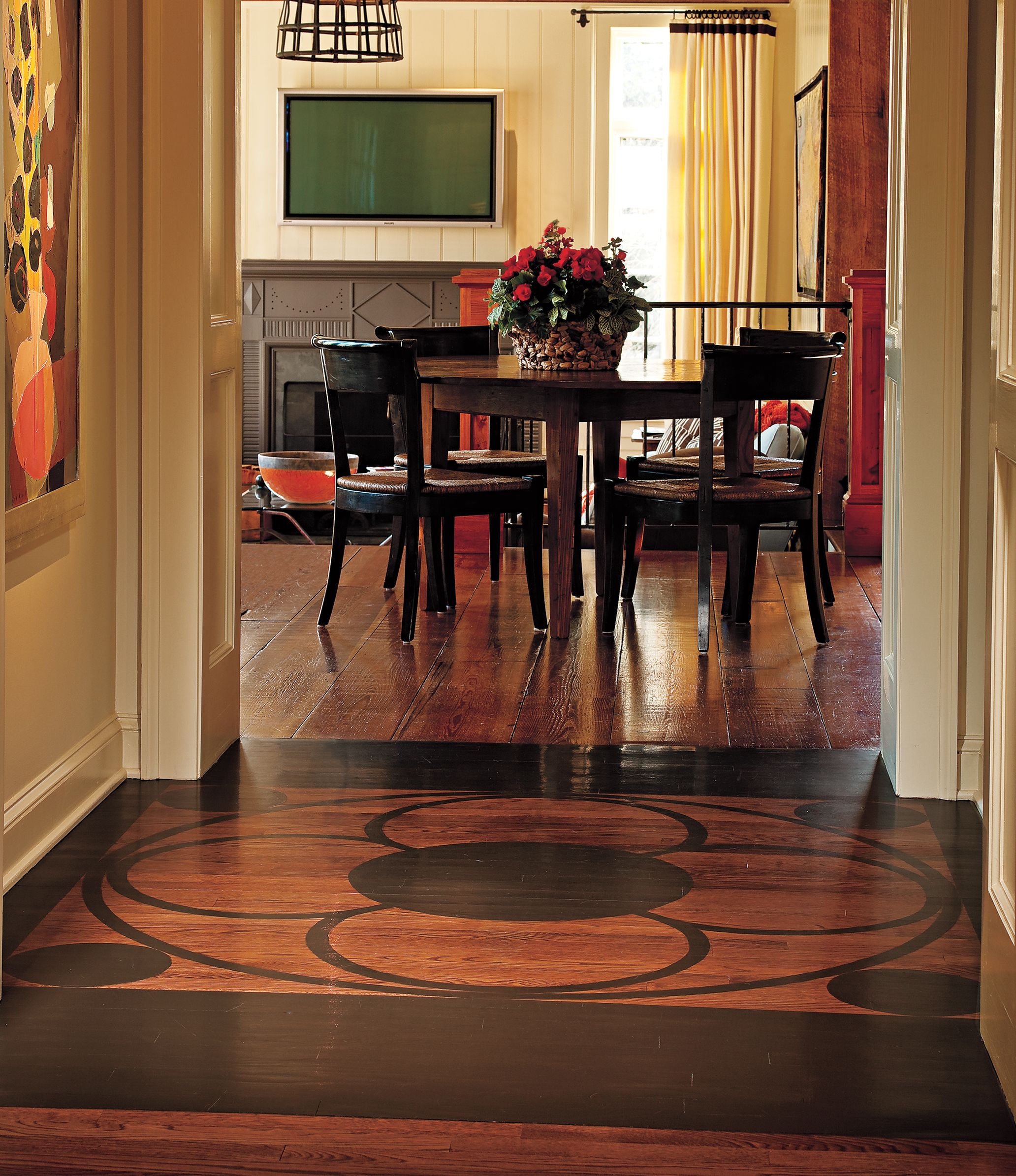
A painted medallion adds color and interest to your floor without completely covering up the natural wood grain. You’ll need to carefully plan your floor medallion design, use high-quality stencils or templates, and choose colors that go with your existing flooring. Use paint products specifically formulated for hardwood floors for proper adhesion. Highlighting the medallion with metallic or pearlized paint adds a nice touch.
Big-Block Basketweave on Concrete
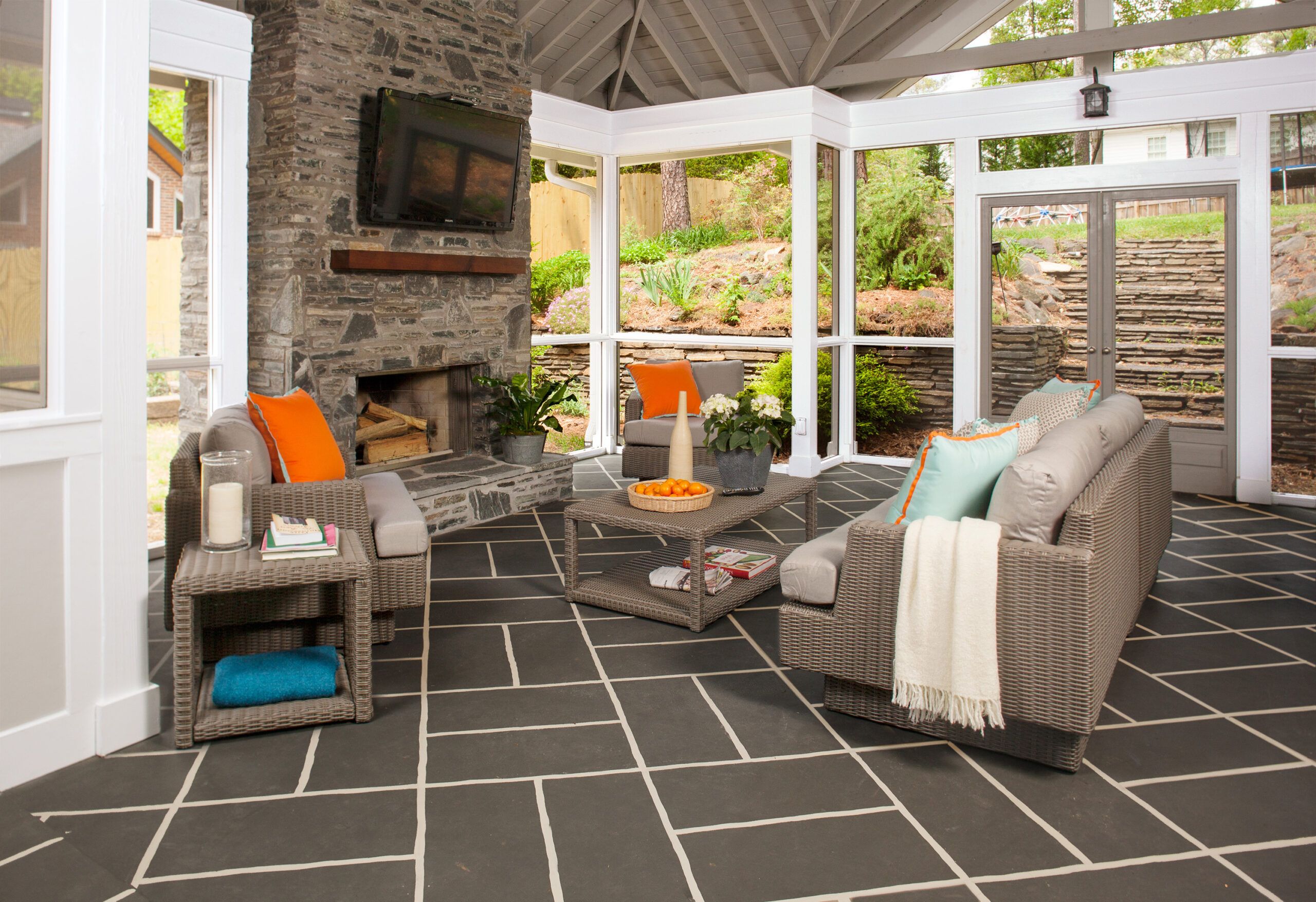
You can transform concrete floors in outdoor rooms or patios with a painted big-block basketweave pattern that mimics the look of floor tiles. Using charcoal-gray and pale-gray-tinted concrete sealer, you can create an interwoven pattern.
Start by thoroughly cleaning and preparing the concrete surface. Use painter’s tape to create the basketweave pattern, alternating between the two shades of gray. Orient it diagonally to “stretch” the room and create an interesting contrast with other architectural elements. You can even the pattern with additional colors or textured sealants.
Colorful Outdoor Carpet
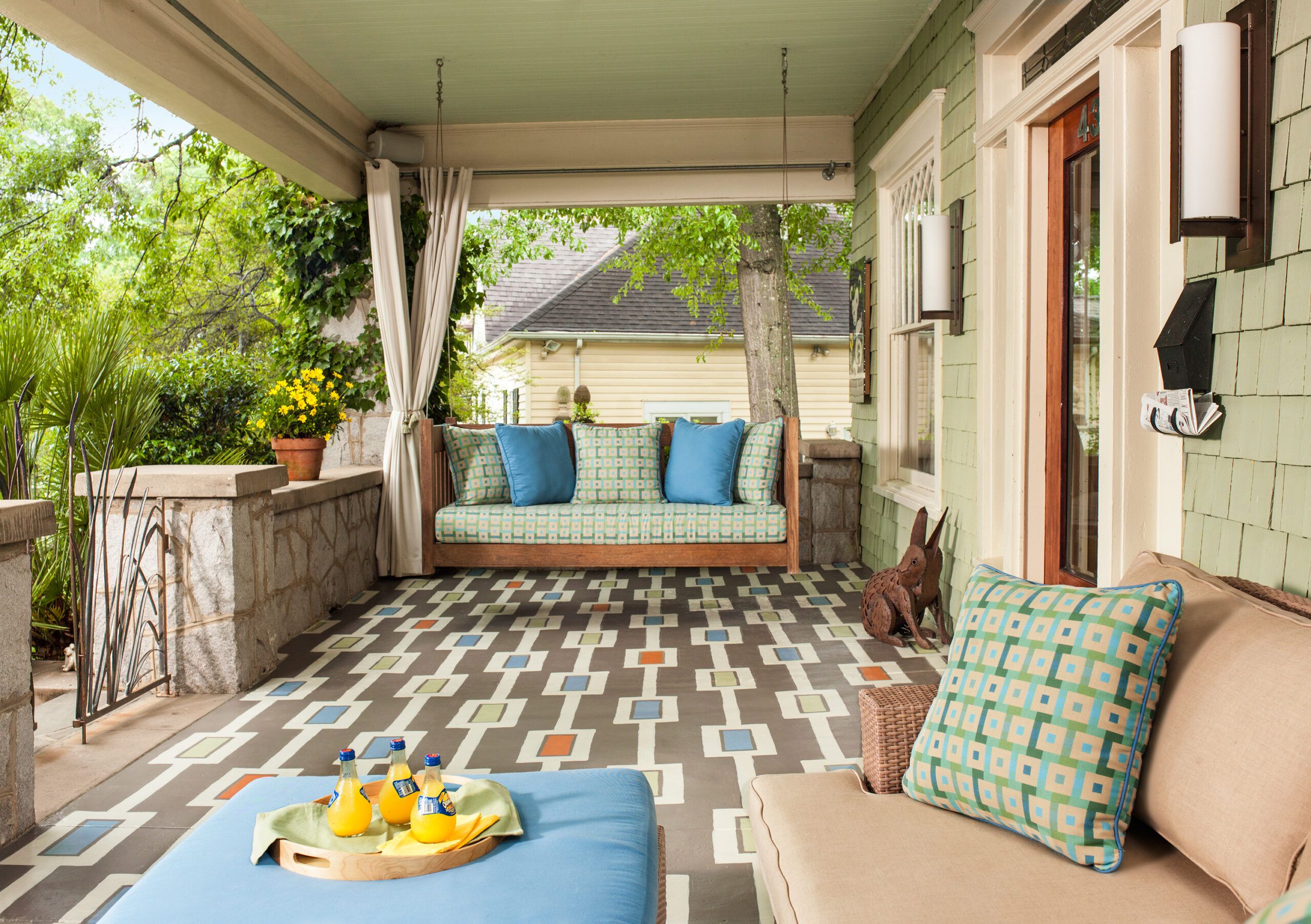
Traditional carpet may not be practical for the outdoors, but you can create the illusion of a rug using paint. Choose a warm gray as a backdrop and incorporate a design, such as a chain-link pattern, filled with patches of complementary colors such as pale orange, blue, and green.
When painting your outdoor “carpet,” use exterior-grade paints and sealers to make sure the design can withstand the elements. Experiment with geometric or floral patterns to find the one that best complements your space.
Oversize Blossom Design
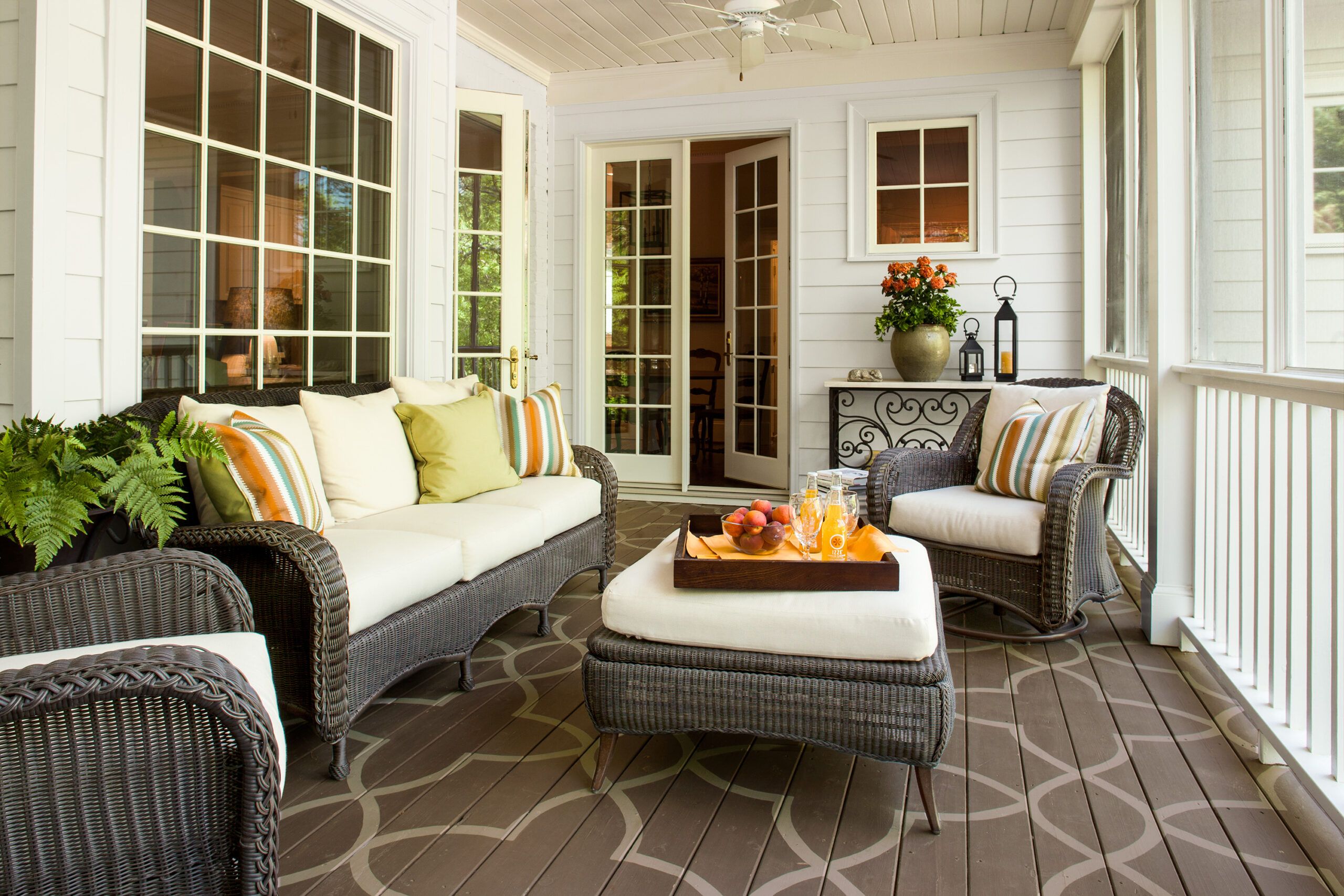
Transform scratched porch floorboards with an oversized floral design that adds a touch of whimsy and charm. This works particularly well on wood planks, since you can use the natural divisions between boards as a built-in ruler. Create a template for a four-petal blossom that spans the width of six planks and an oval template that covers two planks.
Add shading or highlights to the blossoms to make the design pop. Use exterior-grade paints in colors that complement your furniture, and apply a clear, protective topcoat to protect the design from foot traffic and weather.
Geometric Porch-Floor Pattern
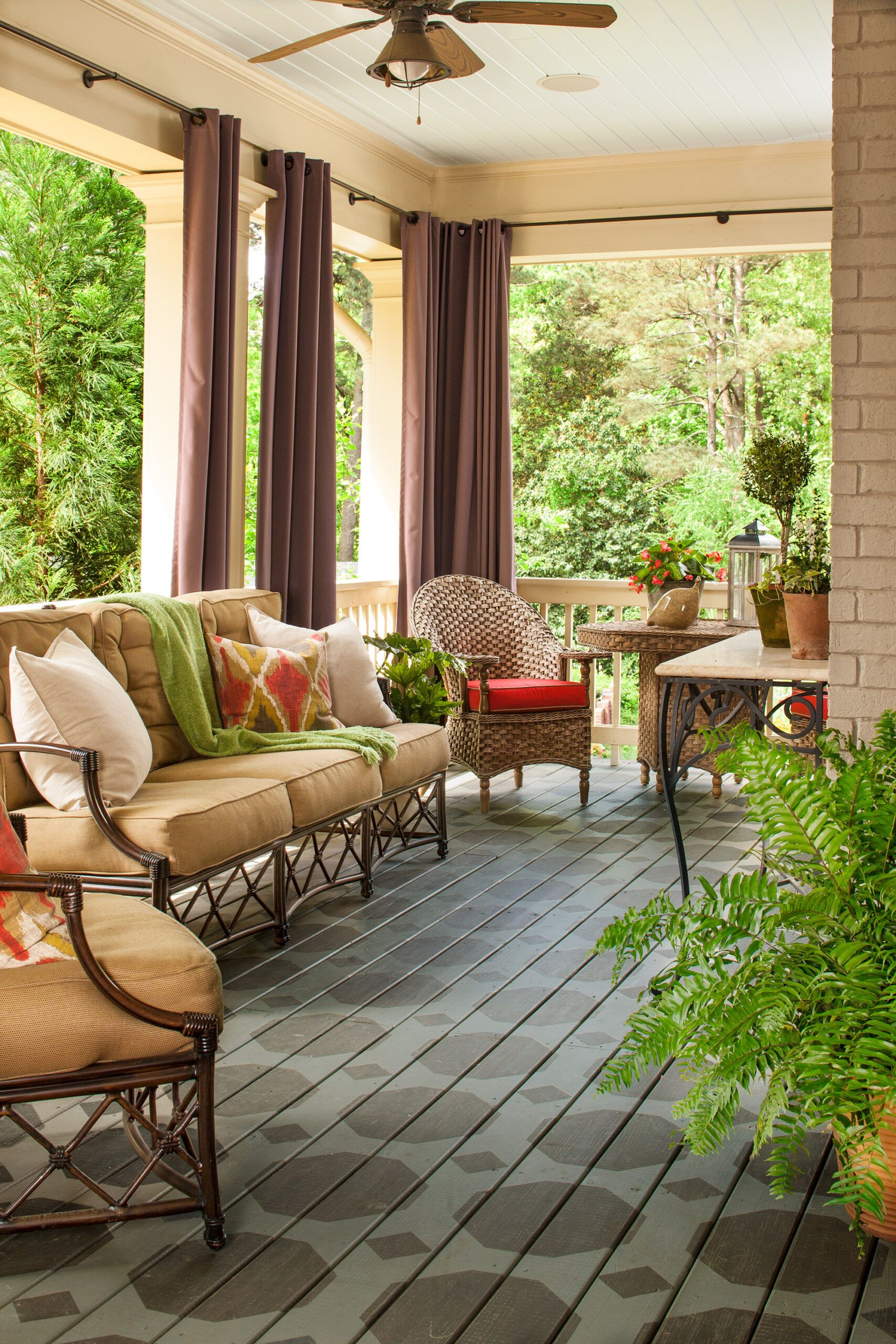
A large-scale geometric pattern, such as an octagon-and-diamond motif, can work wonders on a porch. This type of design can make a small area appear larger. Achieve crisp, clean lines with careful outlining and liberal use of painter’s tape.
Consider your porch’s proportions and scale your design to match the space. Incorporate contrasting or harmonizing colors to enhance the geometric effect.
Stenciled Pattern
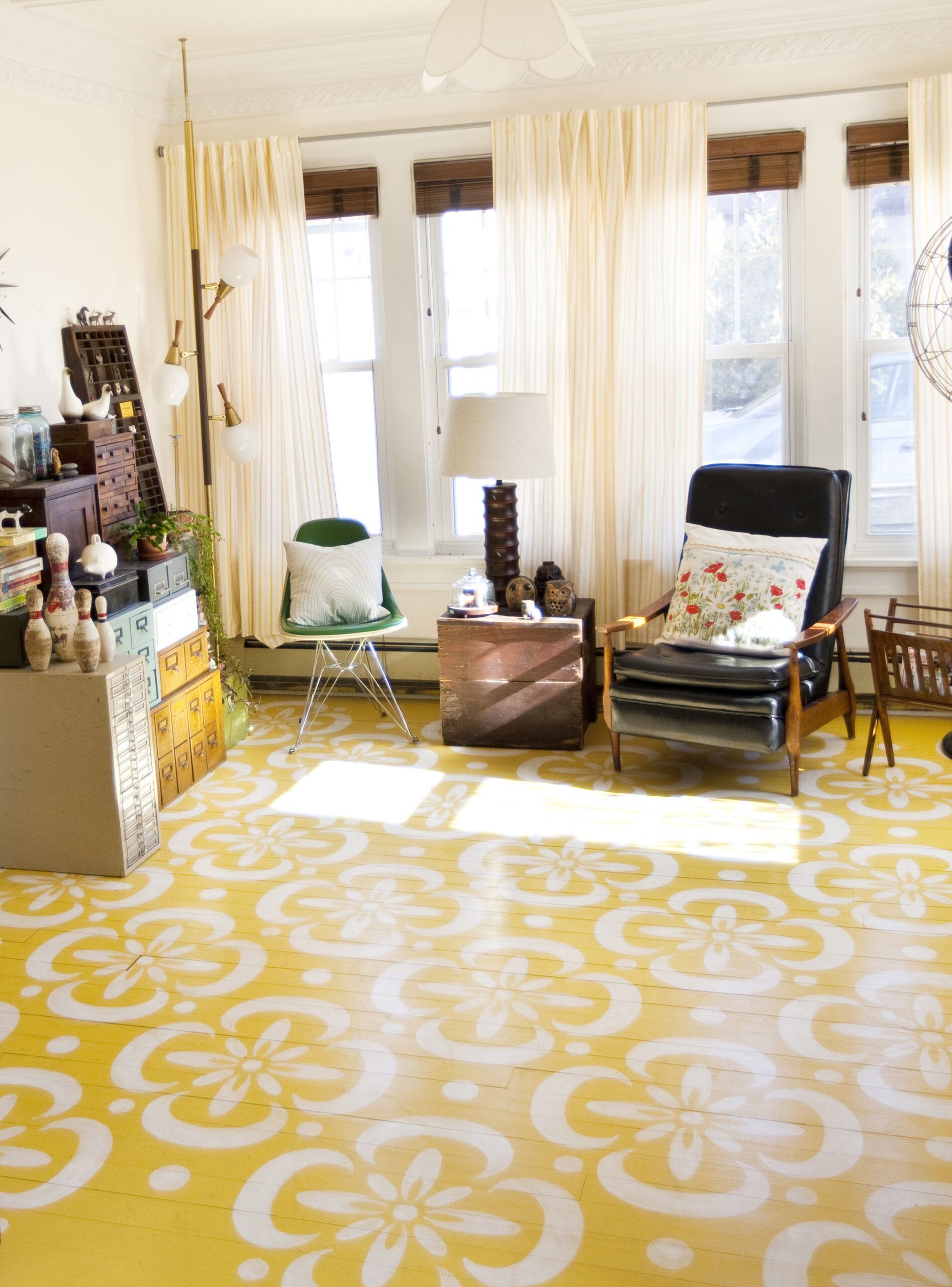
Stenciling lets you add intricate patterns to battered pine floors or other wood surfaces without the need for freehand painting skills. Sand the floor and apply a coat of primer, followed by three coats of glossy porch-and-floor paint in your chosen base color.
Once the base coat is dry, use a stencil and a small paintbrush to apply the pattern in a contrasting color. Layering multiple colors makes for a more complex and textured effect. Finish with two coats of polyurethane.
Painted Stair Runner
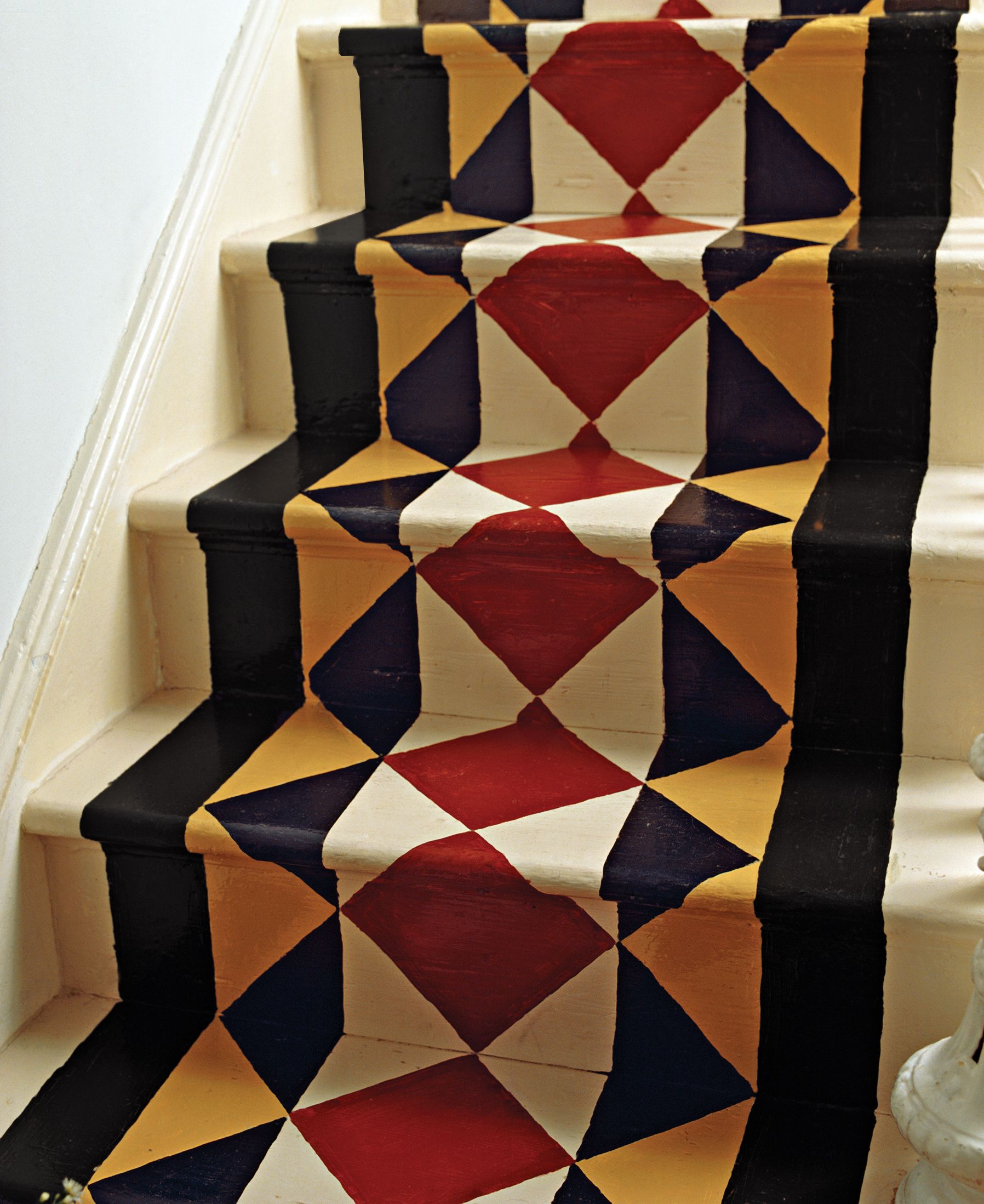
A painted stair runner can mimic the look of a patchwork quilt or other textile patterns, adding warmth and character without requiring carpet cleaning. By carefully painting the pattern to flow over the steps and risers, you can achieve a 3D effect.
Start by thoroughly cleaning and preparing the stairs. Use painter’s tape to section off each shape in your chosen design. Apply colors one at a time, allowing each to dry completely before moving on to the next.
Check out this and other Imaginative Painted Stair Ideas.
Six-Pointed Star Pattern
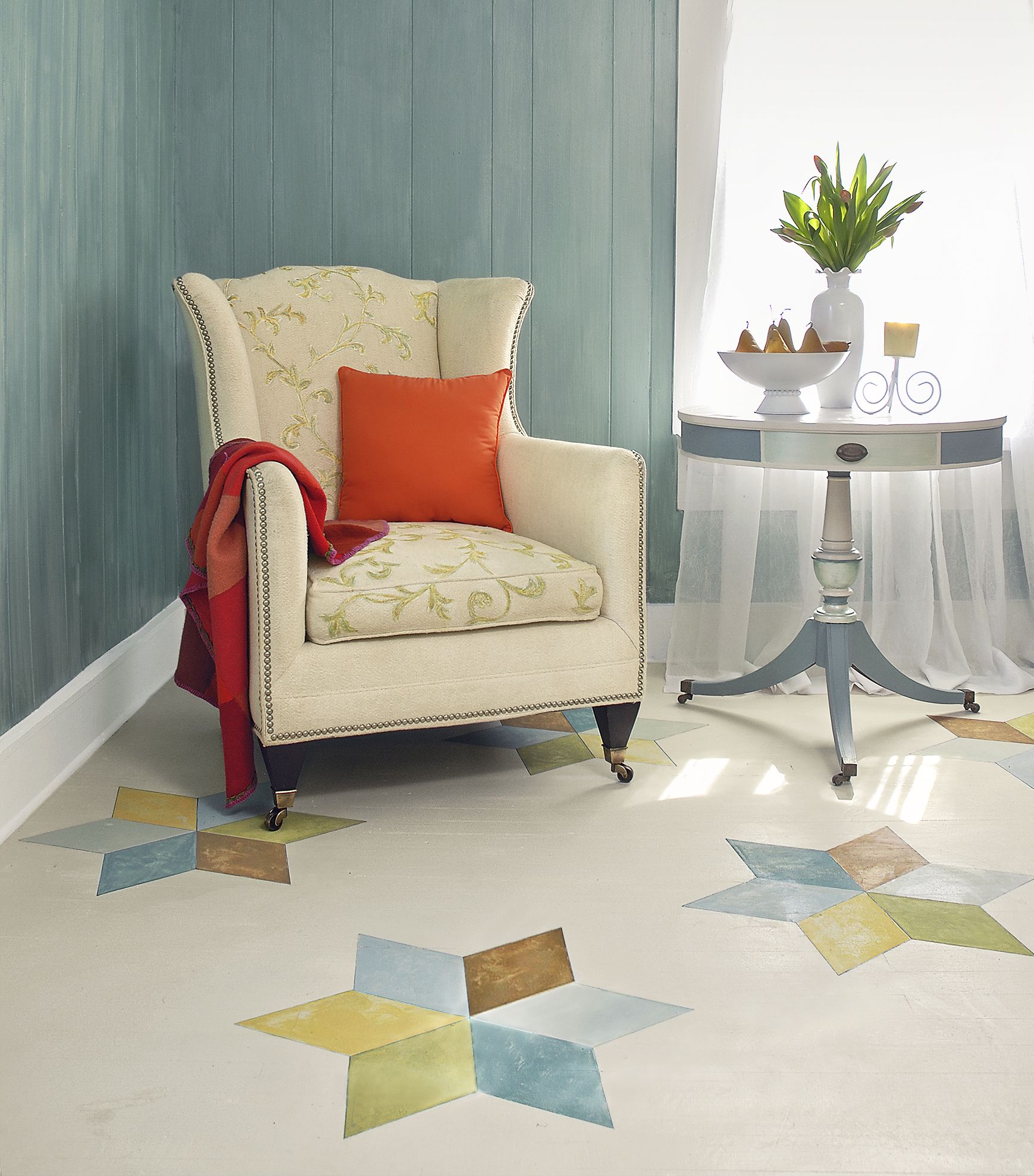
A six-pointed star pattern is a fun bold, geometric design that also uses up leftover paint from other projects. This technique works well on old flooring that has been prepped with a smooth new finish. Don’t worry about mixing paint sheens, since you’ll finish with a coat of polyurethane for a uniform look.
Start by painting your base color and letting it dry completely. Use a template to trace the star pattern onto the floor, then carefully paint each section of the star using your chosen colors. Finish with a clear protective topcoat. This design is particularly striking in entryways or as a focal point in larger rooms.
